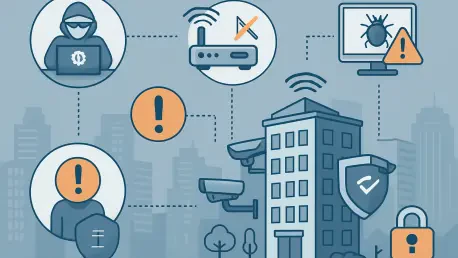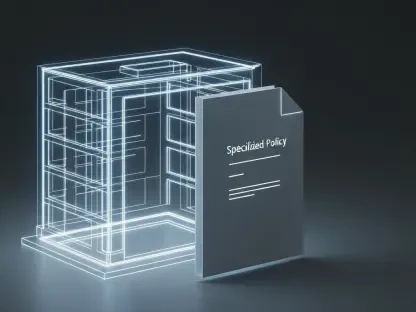The rapid evolution of smart buildings has centralized the control of various essential systems, presenting novel challenges and opportunities in energy management, security, and occupant comfort. This technological integration, however, inadvertently broadens the scope for cyber vulnerabilities, particularly highlighted by recent findings in the Tridium Niagara Framework. This specific framework is pivotal in managing interconnected smart systems worldwide, from HVAC systems to complex energy grids. Yet, recent research has exposed significant security vulnerabilities within this system, raising alarms over potential cyber risks and system integrity challenges in the smart infrastructure landscape.
Exploring the Depth of the Vulnerabilities
Architects of Risk: The Core Technical Flaws
The disclosure of 13 critical vulnerabilities within the Tridium Niagara Framework has put the spotlight on its structural weaknesses, casting doubts on its resilience in the face of modern cybersecurity threats. These vulnerabilities encompass a range of issues, notably improper authentication procedures and buffer overflow problems. Such flaws allow malicious entities to potentially execute remote code, leading to dangerous outcomes such as system takeovers and unauthorized command execution. Compounding these technical deficiencies is the framework’s reliance on outdated communication protocols. This reliance enhances the risk profile, drawing the attention of sophisticated cyber adversaries who exploit these antiquated technology facets to bypass security barriers and initiate attacks.
Furthermore, the implications of these vulnerabilities extend beyond theoretical avenues. Recent scans have brought to light over 9,000 Niagara systems accessible via the internet, many of which are powered by obsolete versions of the software. These outdated systems are particularly susceptible to exploits targeting the identified vulnerabilities, making them prime targets for potential takeover and disruptive cyber operations. Given the complexity and role of the Niagara Framework within smart building infrastructures, addressing these concerns is imperative to protect the integrity and operational safety of smart environments from cyber threats.
Connecting Historical Precedents
The vulnerabilities surfacing within the Niagara Framework are not entirely unprecedented. Historical instances have also underscored its susceptibility to cybersecurity threats, with significant flaws discovered in BlackBerry’s QNX software, embedded within Niagara, serving as harbingers of current issues. Such incidents showcase recurring themes and patterns, highlighting a history of exploitations leveraged by increasingly advanced threat actors. This historical backdrop accentuates the importance of continued diligence and adaptability in confronting old and new security challenges to prevent repeat vulnerabilities from being manipulated.
Adding to the framework’s challenges, previous warnings regarding centralized control vulnerabilities date back over a decade, suggesting a persistent pattern of oversight. As a linchpin in the Internet of Things ecosystem, Niagara’s security challenges indicate broader implications, calling for across-the-board vigilance in securing interconnected systems. Experts suggest that these recurring vulnerabilities hint at the involvement of sophisticated cybercriminals, possibly including state-sponsored operatives, exploiting architectural weaknesses. This necessitates a comprehensive, robust approach to fortifying smart infrastructures against evolving threats and ensuring sustained system reliability.
Recommended Responses and Preventative Strategies
Industry and Vendor Countermeasures
In response to these alarming vulnerabilities, Tridium has issued software patches and updates to resolve some of the highlighted issues. Alongside these technical fixes, the company strongly advises the implementation of multi-factor authentication processes and the deactivation of unnecessary system ports. Such measures can significantly reduce exposure to potential cyber threats, creating additional security layers that help protect sensitive smart building operations. The use of multi-factor authentication, in particular, adds a layer of security beyond straightforward passwords, making unauthorized access substantially more challenging for potential attackers.
Moreover, cybersecurity experts recommend conducting regular network vulnerability assessments to proactively identify and address emerging risks before they are exploited. The importance of network segmentation is also emphasized; partitioning Niagara systems away from widespread internet exposure can effectively mitigate the effects of a potential attack. Segmentation, in particular, helps contain any breaches within isolated parts of the system, thereby protecting the broader network and minimizing damage. These strategies collectively represent a proactive approach, strengthening defenses against current and future cybersecurity threats targeting smart infrastructures.
Embracing Evolving Security Architectures
Efforts to address vulnerabilities within smart building frameworks suggest a broader shift towards embracing zero-trust architectures, which are becoming increasingly pivotal in modern cybersecurity practices. Zero-trust emphasizes continuous verification of user and device integrity, inherently reducing the opportunity for unauthorized access and potential attacks. By denying implicit trust within network environments, such architectures inherently limit attack vectors available to malicious entities. This approach aligns with broader efforts to improve supply chain security within industrial control systems, offering a nuanced defense mechanism against espionage and data breaches.
The recent incident involving the Niagara Framework illuminates the fragility of digital infrastructures, highlighting the necessity for collaborative efforts among vendors, researchers, and regulators. As the smart infrastructure sector is poised for significant growth, fortifying these systems against evolving threats is crucial to ensure stability and safety. Collaborative efforts across the industry can ensure smarter, more secure systems, allowing technological advancements to continue fueling growth, innovation, and enhanced quality of life within smart building environments.
Future Directions in Cybersecurity for Smart Buildings
The surge in smart building technology has centralized control over vital systems, ushering in both new challenges and opportunities in areas like energy management, security, and the comfort of building occupants. This growing technological nexus, however, has inadvertently expanded the potential for cyber vulnerabilities. This issue is especially apparent in the findings related to the Tridium Niagara Framework. This crucial framework plays a central role in managing interconnected smart systems globally, from heating, ventilation, and air conditioning (HVAC) systems to intricate energy grids. However, the discovery of notable security weaknesses within this system has triggered significant concerns about potential cyber threats and issues with maintaining system integrity in the realm of smart infrastructure. These vulnerabilities underscore the balancing act between advancing technology and safeguarding against potential cyber risks. As smart buildings become more prevalent, it is imperative to address these security concerns to ensure safe and efficient operations.









